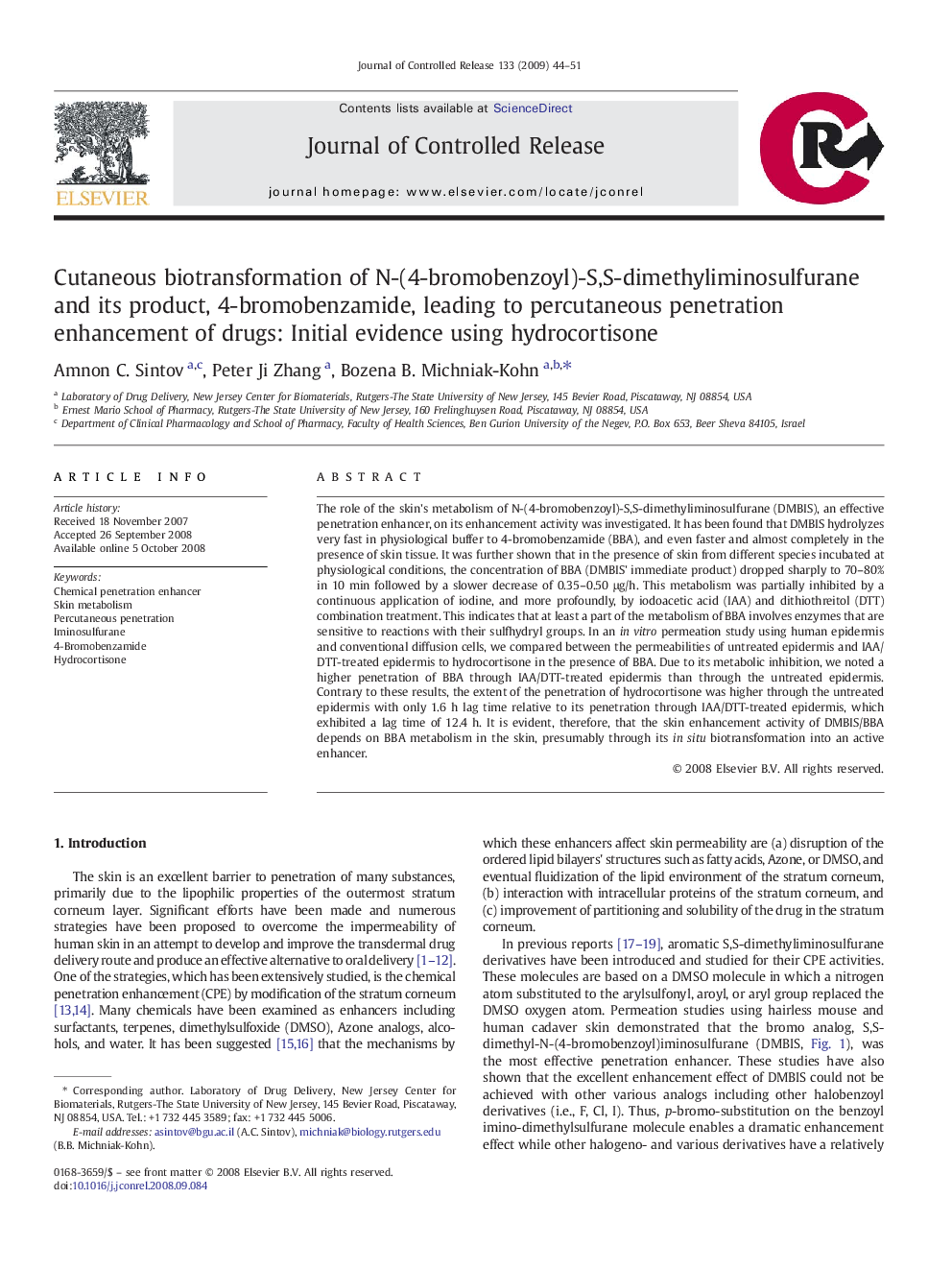| کد مقاله | کد نشریه | سال انتشار | مقاله انگلیسی | نسخه تمام متن |
|---|---|---|---|---|
| 1426419 | 986811 | 2009 | 8 صفحه PDF | دانلود رایگان |
عنوان انگلیسی مقاله ISI
Cutaneous biotransformation of N-(4-bromobenzoyl)-S,S-dimethyliminosulfurane and its product, 4-bromobenzamide, leading to percutaneous penetration enhancement of drugs: Initial evidence using hydrocortisone
دانلود مقاله + سفارش ترجمه
دانلود مقاله ISI انگلیسی
رایگان برای ایرانیان
کلمات کلیدی
موضوعات مرتبط
مهندسی و علوم پایه
مهندسی مواد
بیومتریال
پیش نمایش صفحه اول مقاله

چکیده انگلیسی
The role of the skin's metabolism of N-(4-bromobenzoyl)-S,S-dimethyliminosulfurane (DMBIS), an effective penetration enhancer, on its enhancement activity was investigated. It has been found that DMBIS hydrolyzes very fast in physiological buffer to 4-bromobenzamide (BBA), and even faster and almost completely in the presence of skin tissue. It was further shown that in the presence of skin from different species incubated at physiological conditions, the concentration of BBA (DMBIS' immediate product) dropped sharply to 70-80% in 10 min followed by a slower decrease of 0.35-0.50 μg/h. This metabolism was partially inhibited by a continuous application of iodine, and more profoundly, by iodoacetic acid (IAA) and dithiothreitol (DTT) combination treatment. This indicates that at least a part of the metabolism of BBA involves enzymes that are sensitive to reactions with their sulfhydryl groups. In an in vitro permeation study using human epidermis and conventional diffusion cells, we compared between the permeabilities of untreated epidermis and IAA/DTT-treated epidermis to hydrocortisone in the presence of BBA. Due to its metabolic inhibition, we noted a higher penetration of BBA through IAA/DTT-treated epidermis than through the untreated epidermis. Contrary to these results, the extent of the penetration of hydrocortisone was higher through the untreated epidermis with only 1.6 h lag time relative to its penetration through IAA/DTT-treated epidermis, which exhibited a lag time of 12.4 h. It is evident, therefore, that the skin enhancement activity of DMBIS/BBA depends on BBA metabolism in the skin, presumably through its in situ biotransformation into an active enhancer.
ناشر
Database: Elsevier - ScienceDirect (ساینس دایرکت)
Journal: Journal of Controlled Release - Volume 133, Issue 1, 5 January 2009, Pages 44-51
Journal: Journal of Controlled Release - Volume 133, Issue 1, 5 January 2009, Pages 44-51
نویسندگان
Amnon C. Sintov, Peter Ji Zhang, Bozena B. Michniak-Kohn,